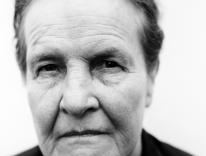FRUITFUL, MULTIPLIED
Anthony Annett’s otherwise informative and succinct article on Laudato si’ (“The Next Step,” August 14) tends to obfuscate one key issue for which the encyclical draws criticism. The encyclical does not deserve the insidious criticism that sustainable development is merely a cover for population control—reducing the numbers of the world’s poor. On the contrary, it should be criticized for not delving deeply into the connection between population growth and climate change. According to UN projections, world population is expected to reach 9.7 billion in 2050 and 11.2 billion in 2100. The population of sub-Saharan Africa is expected to more than triple to 4 billion. While rich countries do consume a disproportionate share of the world’s resources, the developing world is not standing still. Per capita carbon dioxide emissions in China grew from 2.7 metric tons in 2000 to 6.19 metric tons in 2010, beginning to approach numbers in Western Europe. (Recently China has made some progress in emissions reduction.)
Even if the rich countries miraculously reduced their emissions to zero, given current trends, the world will not be able to control global temperature change to 2 degrees Celsius unless the developing world also contains its emissions. A projected 50-percent increase in world population will have commensurate impact on emissions. An equally frightening prospect is the rapid depletion of critical minerals and paucity of arable land.
Pope Francis famously said that Catholics don’t have to breed “like rabbits.” How do we successfully reconcile that message with Laudato si’?
Vidya Kale
Lake Oswego, Ore.
MAN DOWN
Yes, the title of Mark Greif’s The Age of the Crisis of Man (reviewed in the June 12 issue) uses the word man. But why did the reviewer, Anthony Domestico, repeatedly employ “man” throughout his review? Did he want to parallel Greif’s title and approach? It’s 2015. Inclusive language is now standard. Not to see it is most distracting.
Susan Rakoczy, IHM
Hilton, South Africa
OLD LABOUR & NEW
With all due respect to Shirley Williams, her, July 10 analysis of the May British General Election (“A United Kingdom?”), and in particular what she has to say about the Scottish National Party (SNP), reflects her own history in British politics, and fails to understand adequately the political tsunami in Scotland, better reflected in the question mark you put in the headline.
Like many others, unfortunately, in the British Labour Party and the U.S. Democratic Party these past forty years, she was too focused on what she perceived as unwelcome and dangerous radical left tendencies in her Labour Party during the 1970s, and missed the boat of the really dangerous and radical right-wing ideology and policies of the Thatcher/Reagan “revolution.” Nowhere is this more obvious than in her description of the recent history of British politics, including that of her Liberal Democrats in coalition with the Conservatives, and her various references to the British “establishment.”
She refers to “the tangled battles between ‘old Labour’—the class-based party of the past—and the New Labour of Tony Blair, which was business-friendly and hewed to the center,” as if only the “old” Labour Party was class-based, while Britain somehow lost its historic and virulent economic and social class system during the Thatcher years. Likewise significant is her implication that being “business friendly” somehow defines the center, but not, heaven forfend, trade unions.
By stating that the center-right orientation of the Conservative (Tory)/Liberal Democrat coalition government that ruled for the five years prior to May was “fairly popular,” she further underlines the confusion among many English (and American) people between Britain and England. The coalition was so popular in Scotland that the Scottish Nationalists, not either of the two parties in the coalition, won forty-six out of the forty-nine constituencies, while the Scottish Labour Party self-destructed, since it was seen as a futile opposition to the Tories. This was the equivalent of Bernie Sanders winning next year’s presidential election in a landslide.
When I was there in May, I even heard of English Labour Party people who were sorry they couldn’t vote for the Scottish Nationalists, who better represented their opposition to Tory “austerity,” and the continuing Tory affliction of poor people, than their own Labour Party. Even a well-informed friend who still voted Labour in Scotland admitted that the Labour Party had “sold us down the river,” by signing up to the “Washington consensus,” which produced the financial fiasco of 2008, followed by the rescue of the banks without accountability for their creation of the fiasco.
In these matters, Pope Francis has been a more relevant authority than most politicians, just as Catholic social teaching has been a better guide in economics for the past century and more than many (if not most) economists, except a few, like John Kenneth Galbraith.
While I regret that Shirley Williams did not stay with the Labour Party in the 1970s and help reform what needed to be reformed, while preserving the greater part of its social- and economic-justice tradition, I can never forget that the politician I most admired for her defense of working people as well as the poor, Margaret Herbison M.P., resigned from the Harold Wilson Cabinet, but not from the Labour Party, when she perceived a retreat from that tradition. Unless the Labour Party finds more people like her, soon there will be no “United Kingdom,” because the Tories will force Scotland to go independent, rather than submit to Little Englander “austerity,” for all but the Tory classes.
Michael L. O’Neill
De Land, Fla.
CORRECTION
In her August 14 column, Jo McGowan writes: “How would a Catholic wife feel about the Orthodox Jewish rule that she cut her hair and wear a wig?” I’m horrified by the ignorance of McGowan that dares to put in writing a canard about a Jewish custom that she knows nothing about. The custom (not rule) of married women cutting their hair is only practiced by a minority of Jewish women, and only those of Hassidic background. Most Orthodox women would recoil at the thought of engaging in such an act, even for religious reason like tzniut (modesty). By the way, women don’t cut their hair; they only make it shorter in order to fit under the wig. Only women from Hungarian background shave their heads.
Raphael Fodde
New York, N.Y
Please email comments to [email protected] and join the conversation on our Facebook page.
Previous Story
New Stories on the Website
Next Story
Stop Protesting, Start Organizing


